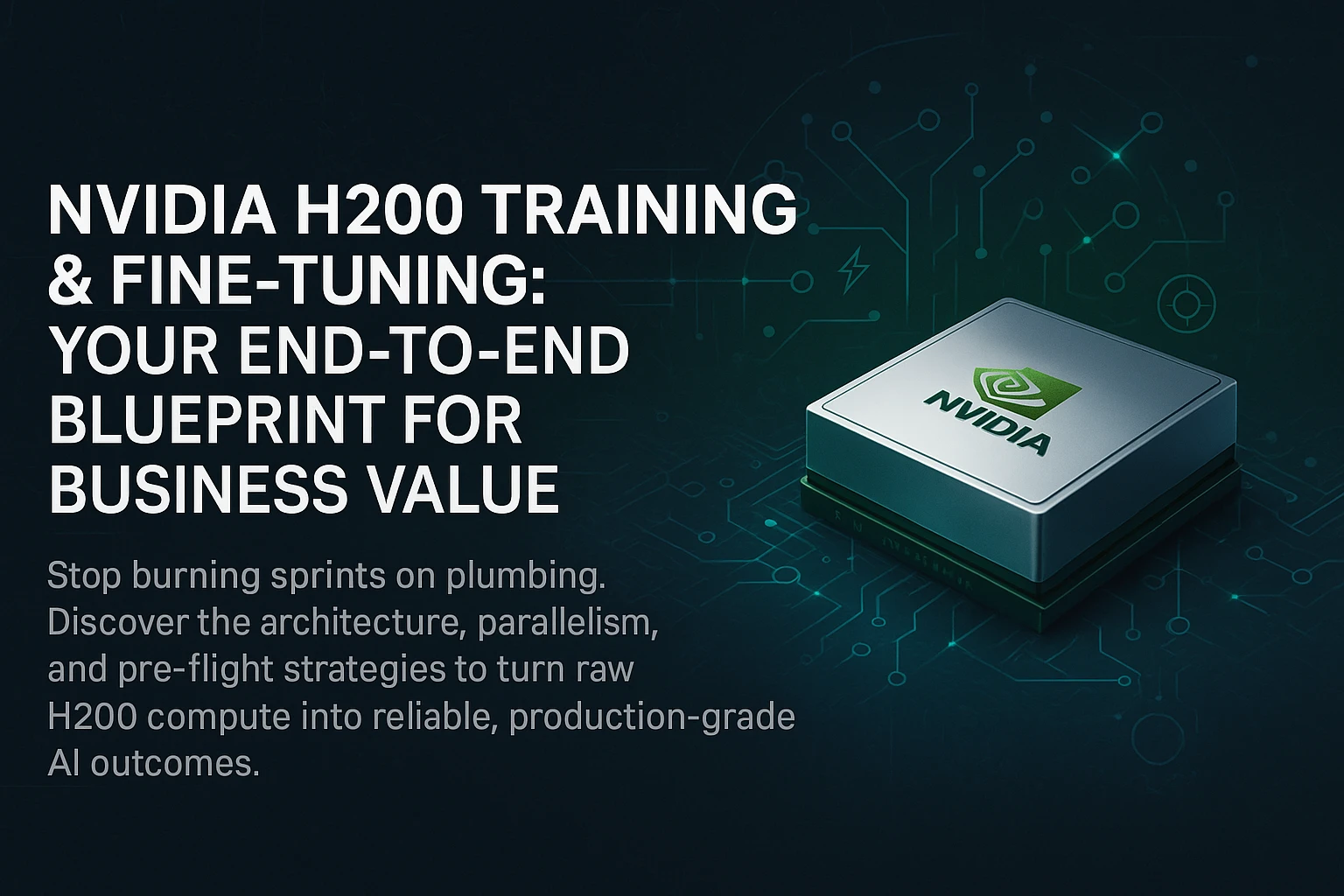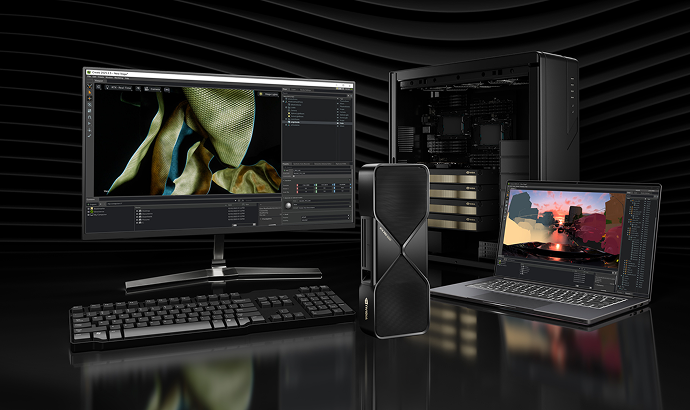

Writing About AI
Uvation
Reen Singh is an engineer and a technologist with a diverse background spanning software, hardware, aerospace, defense, and cybersecurity. As CTO at Uvation, he leverages his extensive experience to lead the company’s technological innovation and development.

The NVIDIA H200 offers three significant advantages that directly impact the economics and efficiency of AI model training. Firstly, it boasts 141 GB of HBM3e memory, providing ample headroom for larger global batch sizes and longer sequence lengths. This reduces the need for constant activation checkpointing, leading to fewer optimizer stalls and better tokens-per-second throughput. Secondly, its Transformer Engine with FP8 enables mixed-precision training, which maintains accuracy while substantially boosting throughput compared to solely using FP16/BF16. Lastly, the H200 benefits from the NVLink/NVSwitch ecosystems, which facilitate efficient tensor and pipeline parallelism across multiple GPU nodes. This is particularly crucial for training larger models, especially those with 70 billion parameters or more. Collectively, these features lead to a shorter time-to-convergence for pre-training and faster wall-clock times for fine-tuning cycles.
Pre-training and fine-tuning on the H200 serve distinct goals, leading to different design choices. Pre-training aims for broad general language competence, typically utilising vast datasets (hundreds of billions of tokens) and requiring frequent, sharded, and resume-safe checkpoints. It often employs a combination of tensor, pipeline, and ZeRO/FSDP parallelism strategies with large global batch sizes and long sequence lengths. Risk controls during pre-training focus on managing curriculum, loss spikes, and divergence.
In contrast, fine-tuning seeks task or domain adaptation, safety, or tone, often using much smaller datasets (10K–50M samples). It prioritises lightweight, rapid iteration cycles for checkpoints and typically uses data parallelism, sometimes with LoRA adapters to keep VRAM low. Precision often remains FP8/FP16, and batching is moderate with task-specific sequence lengths. The primary risk controls in fine-tuning are preventing catastrophic forgetting, addressing bias drift, and avoiding overfitting.
Architecting NVIDIA H200 training pipelines for convergence involves several critical aspects:
To achieve fast, cheap, and reversible fine-tuning on the H200, specific methods and risk controls are employed:
These strategies enable efficient iteration and deployment of fine-tuned models while minimising resource consumption and allowing for easy reversion or adaptation
Before embarking on long training runs with the H200, Uvation emphasises rigorous pre-flight readiness checks to prevent failure modes that can waste significant time and resources:
These comprehensive checks are designed to make the initial weeks of training runs “boring” – a hallmark of mission-critical infrastructure.
Practical H200 setups vary depending on the model’s class and size, with general guidance on precision, parallelism, sequence length, and global batch size:
It’s important to tune learning rates per model family and consider these configurations as topology guidance rather than strict rules.
The introduction highlights that “You Don’t Win With FLOPs—You Win With Fit.” While the NVIDIA H200 offers impressive raw computational power (FLOPs), such as 141 GB of HBM3e and high FP8 throughput, simply having powerful hardware is not enough. The true value lies in how this raw compute is effectively transformed into reliable, production-grade outcomes. This involves expertly shaping data, managing precision, implementing efficient parallelism, and building in failure resilience. The H200 enables capabilities, but it’s the strategic application and fine-tuning that ensures the model “fits” the specific task, domain, and business requirements. This ‘fit’ ultimately determines whether an AI deployment delivers tangible business value and a return on investment, rather than just impressive benchmark numbers.
Uvation offers a comprehensive suite of services designed to help organisations maximise the value of the NVIDIA H200 without requiring them to “burn sprints on plumbing.” These services include:
Through these offerings, Uvation aims to streamline the process from initial setup to achieving business value, allowing clients to focus on their core AI development rather than infrastructure complexities.
We are writing frequenly. Don’t miss that.
